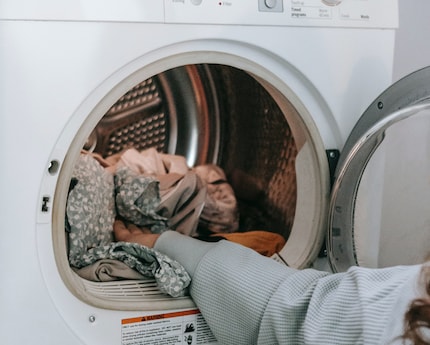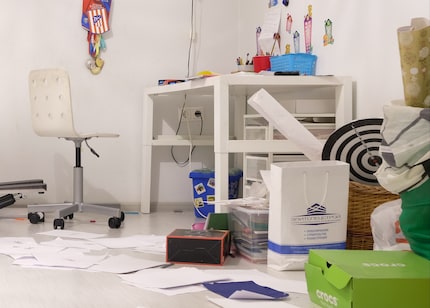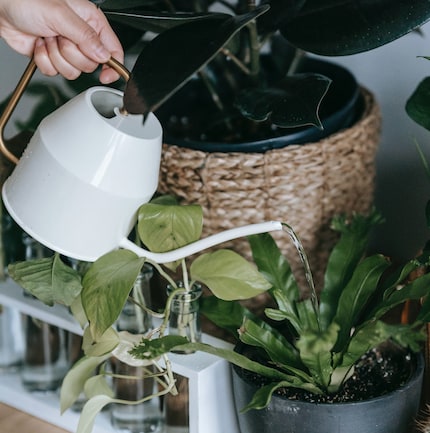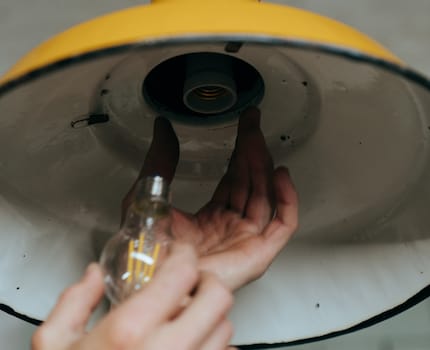
Background information
Happiness by instruction? How I (almost) failed at the 6-minute diary
by Anna Sandner

I’m a conscientious person. But I often put things off. I’m hoping to change this. For one week, I want to take care of small tasks right when they pop up. Will giving up procrastination lead to more order and relaxation?
I, like many others, am a master procrastinator. To stop myself from getting overwhelmed, I’ve built up a kind of tunnel vision to handle my at times chaotic everyday life. I simply ignore any clothes, dishes or toys strewn around my home. I could ruminate for hours about all the things I should do. At the end of this mental ordeal awaits a gargantuan mountain of tasks. Without fail, I capitulate without taking a single step. A classic mistake, I know – and yet I keep falling into the same trap.
I want to change this. This week, I’m tackling the topic of procrastination. For seven days, I want to complete small tasks immediately to spare myself the guilty conscience. I expect a sense of increased inner calmness, emotional highs when I get something done quickly along with a tidier general state of mind, which should have a positive effect on my mood.
There will certainly be no shortage of tasks to complete. The challenge? Deciding what can be done quickly and what will take too long. I’ll be relying on these tips to combat procrastination to get the ball rolling.

This week isn’t about tackling huge tasks I’ve been putting off for ages. It’s about getting the little things out of the way to stop a massive pile of to-dos from accumulating. A lot of it certainly has to do with «simply» keeping tidy. The hitch is that’s not so simple to me. I’ll be consulting Olivia Leimpeters-Leth’s interview with organisation expert Martina Frischknecht for help. My guiding principle for this week is the two-minute rule: anything I can get done in two minutes gets done right away.
On the first day, this works really well. Instead of spending half the day thinking about whether I should do the laundry today, I start a load right after getting up. And when I walk past a mess (dishes, paperwork, clothes, toys), I immediately put the items in their proper place. Like this, I complete around twenty small tasks over the course of the first day – and I do actually feel more organised than usual come evening.
What started so well comes to an abrupt end on Day 2: my child falls ill. Anyone who’s ever spent a day working from home while looking after a child with a stomach bug will know this is a surefire way to generate chaos, not eliminate it. I briefly consider postponing my no-procrastination week, but ultimately decide to push on; there will never be a perfect time. And this way, it’s a very realistic experiment. On Day 2 – as was to be expected – one disaster follows the next. And as much as I try to take care of little tasks in between, I don’t quite manage. Day 3 is no different. On both these days, even more things are left not done than usual. I’m feeling pessimistic about the week.

Fortunately, the illness proved to be just an intermezzo. From Day 4 onwards, full of determination, I can set about getting things done again. As on the first day, I’m quite good at clearing things as I walk past them. It definitely results in more order. But the two days with a sick child have also shown me that it only works when I really concentrate. I, at least, don’t manage to do absolutely everything en passant.
I also find myself confronting the limits of the two-minute rule. What about cleaning out the dishwasher, for example? My stopwatch says it took me 5 minutes and 34 seconds. Cleaning the litter box? Two minutes 25 seconds. Hanging the laundry? Four minutes 56 seconds. I’m realising that I’m exceeding the two-minute limit over and over again.
On the other hand, I’m finding out other things can be done quickly:
Read the electricity meter and send the number to our provider? Check!
Inflate bike tyres? Check!
Dust the living room? Check!
Wipe down bathroom? Check!
Make the bed? Check!
Water the plants? Check!

Slowly, I’m realising how my tunnel vision came about. First, I underestimate the amount of time many tasks take, and second, I often jump from one task to another unintentionally. When watering my plants, I’ll notice that the shelf needs to be wiped down. On the way to get the dust cloth, I stumble over all manner of toys and can’t help but notice the overflowing dish rack. While each thing is quickly done on its own, together, they add up. My hope was that once I’d caught up on these tasks, my problem would take care of itself. Unfortunately, that wasn’t the case. I’d definitely have to continue doing this longer.
The big question is what do I do with all the tasks that don’t take forever, but certainly take over two minutes? One tip that also holds true for combatting procrastination is to divide things into even smaller tasks. But that doesn’t seem like an effective option for clearing out the dishwasher or hanging up the laundry. The effort would be no smaller, and I’d have to force myself to start several times instead of just once. So, I decide to change the two-minute rule to a ten-minute rule. And to avoid getting totally caught up in my to-dos, I create an additional rule: I can complete no more than two of these tasks per hour.
My decision to increase the two minutes to ten was spot on. Finally, I’m not busy contemplating if I can complete the task at hand in two minutes – and become really efficient on Day 6. This also marks the first day of feeling like the background chaos of unfinished tasks is slowly decreasing. So it does work. I’m on the verge of euphoria, and I’m no longer wasting time timing the tasks.
On Days 6 and 7 (the weekend), I again take care of countless small cleaning jobs on the fly, such as picking something up, putting something else away, wiping down the table and putting away the books. And thanks to the slightly longer time allowance, I’ve also been doing things that I’ve been putting off for a while now – replacing the last of our old light bulbs with LEDs, cleaning a few of our windows, throwing dried-up kitchen herbs into the compost, tidying up my desk, and oiling our squeaky garden gate. Check, check, and check!

What I’m particularly proud of is that I’ve finally established a filing system for important documents. This is where the tip of dividing larger tasks into smaller ones proved particularly handy. Over several 5-minute sessions, I was able to reduce the accumulated mountain of paper without despairing.
My overall conclusion after this week of order is mixed.
I had to keep reminding myself that I was doing a trial week. Otherwise, I may well have lost sight of my mission. This created an underlying feeling of tenseness that stayed with me all week. In this respect, not putting things off any longer doesn’t exactly make for more relaxation. There were moments when it really stressed me out. In addition, I ran the risk of exceeding the time limit and spreading myself too thin with all the to-dos. But I could imagine this going away once you get used to the system.
The sense of achievement I got is unbeatable. Apart from the two days my kid was sick, I experienced success every day. All in all, my life is noticeably tidier after the seven days of the trial. The tasks I’d been putting off for a while made an especially big impact. The fact that I was able to check them off helped me get the high I was hoping for. Each time our gate opens without a squeak sparks a moment of joy. As does each ride on my newly pumped tyres and each look through our streak-free windows.
Something I’ll certainly keep – albeit in a less pedantic way – is clearing messes as I walk past them. I’ll also continue setting myself one major task per week, divided into five- to ten-minute chunks that I can complete over the course of the week. I don’t want to deny myself the endorphin kick I get when crossing something long overdue off my to-do list.
Header image: Cottonbro Studios/Pexels
Science editor and biologist. I love animals and am fascinated by plants, their abilities and everything you can do with them. That's why my favourite place is always the outdoors - somewhere in nature, preferably in my wild garden.
Interesting facts about products, behind-the-scenes looks at manufacturers and deep-dives on interesting people.
Show all